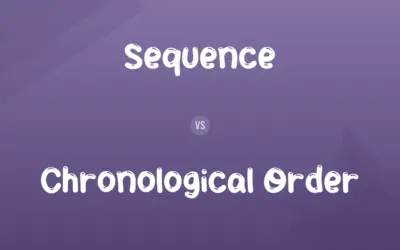Clay vs. Slime: Difference and Comparison
Edited by Muazma Batool — By Muneeza Rehman — Updated on February 21, 2024
Clay is a natural, earthy material used in pottery and construction, while slime is a viscous, often synthetic substance popular in toys and stress relief.

Difference Between Clay and Slime
Clay, a naturally occurring material, has been a staple in human creativity and construction for thousands of years. It consists of fine-grained minerals, primarily used in making pottery, bricks, and sculptures due to its plasticity when wet and durability when fired. Slime, on the other hand, is a modern, synthetic creation, generally made from a mixture of water, sodium borate, and polyvinyl alcohol, designed for play and sensory stimulation. Its popularity, especially among children, stems from its unique texture and the endless possibilities for customization with colors, glitter, and beads.
Muneeza Rehman
Feb 21, 2024
The primary distinction between clay and slime lies in their composition and use. Clay's significance in human culture is profound, serving both functional and artistic purposes, from ancient pottery and building materials to contemporary art. Slime, while lacking historical depth, plays a significant role in today's leisure activities, offering therapeutic benefits such as stress relief and sensory play, contributing to its widespread appeal in the toy industry.
Muneeza Rehman
Feb 21, 2024
In terms of texture and physical properties, clay and slime offer distinct tactile experiences. Clay, when moist, is malleable and can be shaped into various forms, hardening permanently when dried or fired, making it ideal for crafts and construction. Slime, characterized by its gooey and stretchable nature, does not hold a shape and is more about the process of manipulation than creating a lasting product.
Muneeza Rehman
Feb 21, 2024
The environmental impact and sustainability of clay versus slime also differ. Clay, being a natural material, is biodegradable and has minimal environmental impact when sourced responsibly. Slime, especially commercial versions containing synthetic chemicals, can pose environmental concerns due to its non-biodegradable nature and potential toxicity, highlighting the importance of eco-friendly alternatives and proper disposal methods.
Henry
Feb 21, 2024
Despite their differences, both clay and slime fulfill human needs for tactile exploration and creativity. Clay connects us to the earth and our cultural heritage, while slime represents modern innovation in materials science, offering new ways to engage with the physical world through play and relaxation.
Elijah
Feb 21, 2024
Clay vs. Slime Comparison Chart
Composition
Natural, earthy material made of fine-grained minerals.
Synthetic, usually a mix of water, sodium borate, and polyvinyl alcohol.
Muneeza Rehman
Feb 21, 2024
Primary Use
Pottery, construction, and art.
Play, stress relief, and sensory stimulation.
Muneeza Rehman
Feb 21, 2024
Texture
Malleable when wet, hardens when dried or fired.
Gooey, stretchable, and does not hold shape.
Muneeza Rehman
Feb 21, 2024
Environmental Impact
Low, biodegradable, and sustainable when sourced responsibly.
Potentially high, due to non-biodegradable synthetic ingredients.
Kaitlyn
Feb 21, 2024
Historical Significance
Ancient, with deep cultural and functional roots.
Modern, primarily recreational and therapeutic.
Muneeza Rehman
Feb 21, 2024
Clay vs. Slime Definitions
◉Clay
Requires firing to become hard and durable.
The pottery was placed in a kiln to fire the clay.
Henry
Feb 21, 2024
◉Slime
Often used for sensory play and stress relief.
Squeezing slime helps him focus better.
Leo
Feb 21, 2024
◉Clay
A natural, pliable earth material used in ceramics.
She molded the clay into a beautiful vase.
Muneeza Rehman
Feb 21, 2024
◉Slime
Can be homemade or commercially produced.
She followed a recipe to make slime at home.
Muneeza Rehman
Feb 21, 2024
◉Clay
Found in various colors, depending on mineral content.
Red clay is often used in brick making.
Muneeza Rehman
Feb 21, 2024
◉Slime
Customizable with glitter, beads, and dyes.
They added glow-in-the-dark paint to the slime.
William
Feb 21, 2024
◉Clay
Used in construction for bricks and tiles.
Clay tiles are popular for their natural look.
Henry
Feb 21, 2024
◉Slime
A non-Newtonian fluid that's popular as a toy.
Kids love playing with colorful slime.
Muneeza Rehman
Feb 21, 2024
◉Clay
Has been a part of human culture for millennia.
Ancient civilizations used clay for both art and utility.
Muneeza Rehman
Feb 21, 2024
◉Slime
Represents modern material science innovation.
Slime kits are a hit at science fairs.
William
Feb 21, 2024
◉Clay
A fine-grained, firm earthy material that is plastic when wet and hardens when heated, consisting primarily of hydrated silicates of aluminum and widely used in making bricks, tiles, and pottery.
Muneeza Rehman
May 03, 2023
Clay vs. Slime Frequently Asked Questions
What makes clay different from slime in terms of use?
Clay is primarily used for artistic and construction purposes due to its ability to harden, while slime is used for play and sensory activities.
Muneeza Rehman
Feb 21, 2024
Why has clay been important in human history?
Clay has been crucial for its versatile uses in pottery, art, and construction, reflecting human culture and technological advancement.
Muneeza Rehman
Feb 21, 2024
How can I dispose of slime responsibly?
Dispose of slime in the trash, not down the drain, to avoid plumbing issues and reduce environmental impact.
William
Feb 21, 2024
Can clay be reused?
Yes, clay can be recycled and reused multiple times until it is fired.
Elijah
Feb 21, 2024
Can clay and slime be used interchangeably for craft projects?
No, their different properties make them suitable for distinct types of projects; clay is for permanent creations, and slime is for temporary play.
Muneeza Rehman
Feb 21, 2024
Is slime environmentally friendly?
Commercial slime can be environmentally unfriendly due to synthetic ingredients, but eco-friendly versions are available.
Muneeza Rehman
Feb 21, 2024
Are there health risks associated with clay or slime?
Both are generally safe when used appropriately, but commercial slime may contain chemicals that are harmful if ingested or if they come into contact with sensitive skin.
Levi
Feb 21, 2024
How do the textures of clay and slime compare?
Clay is pliable and can be shaped when wet, hardening with heat, while slime remains consistently gooey and stretchable.
Lucas
Feb 21, 2024
Can making slime be considered an educational activity?
Yes, making slime can teach basic chemistry principles, material properties, and the importance of precise measurements.
Nolan
Feb 21, 2024
What is the significance of slime's popularity?
Slime's popularity highlights a broader trend towards engaging, hands-on play that combines entertainment with sensory and educational benefits.
Muneeza Rehman
Feb 21, 2024
Content Creators
Written by
Muneeza RehmanAt Comparisons.wiki, Muneeza skillfully navigates the vast sea of information, ensuring clarity and accuracy as the lead content editor. With a keen eye for detail, she curates every comparison to enlighten and engage readers.
Edited by
Muazma BatoolAs a content editor, Muazma Batool is not just a grammar guru but a creative mastermind who breathes life into every word. With an eagle eye for detail and a passion for storytelling, she transforms bland text into engaging content that captivates audiences and drives results.
































